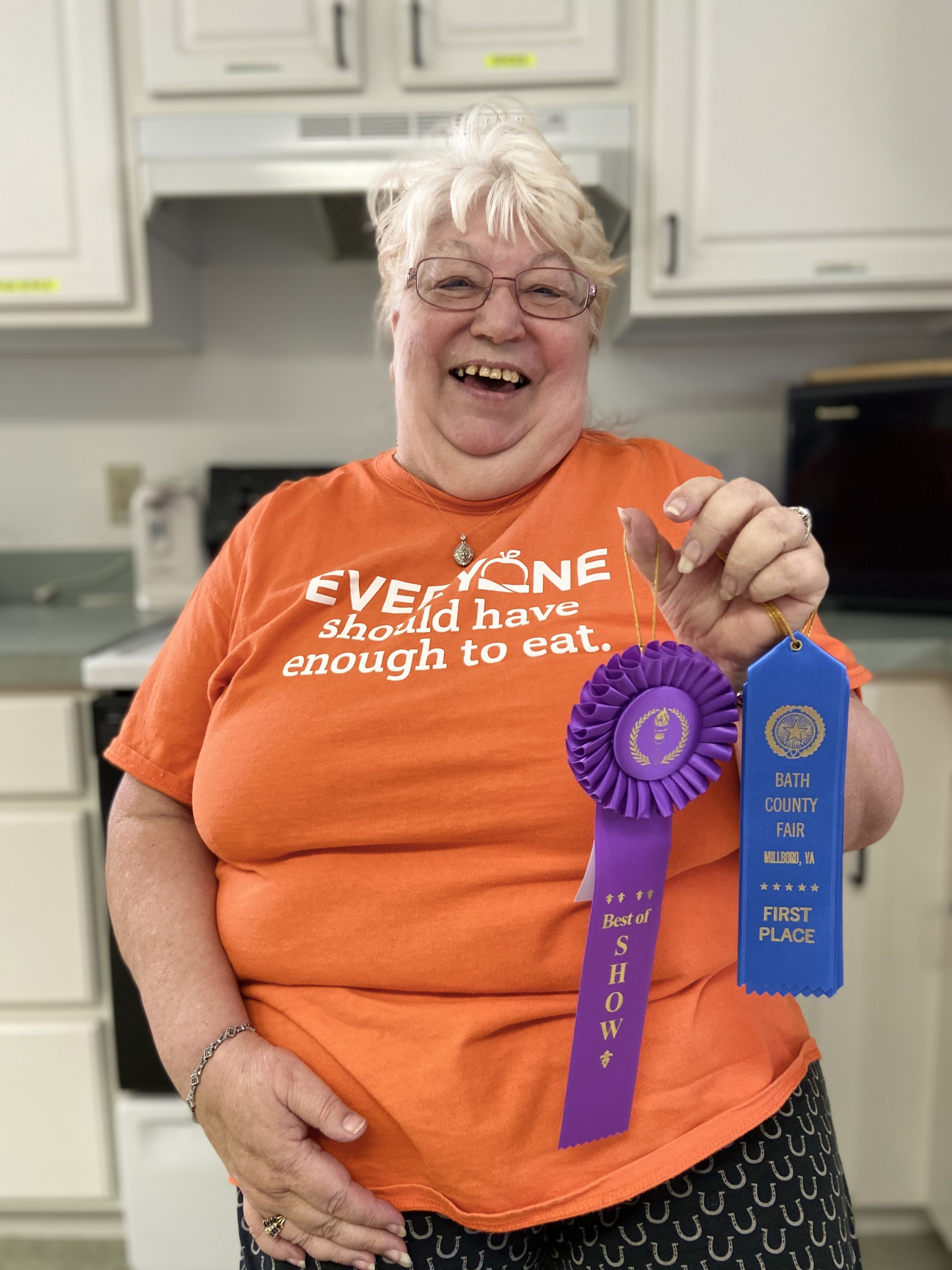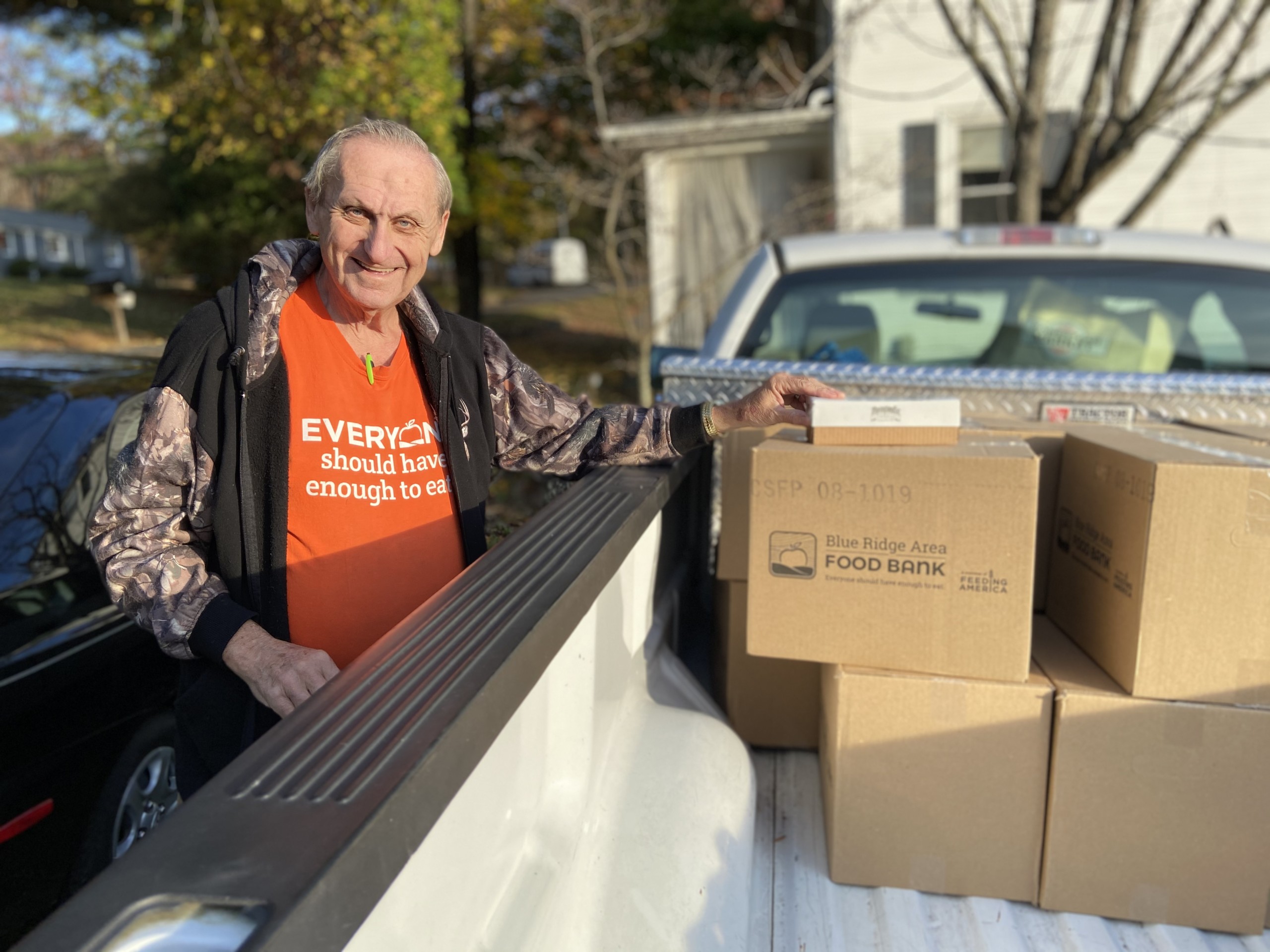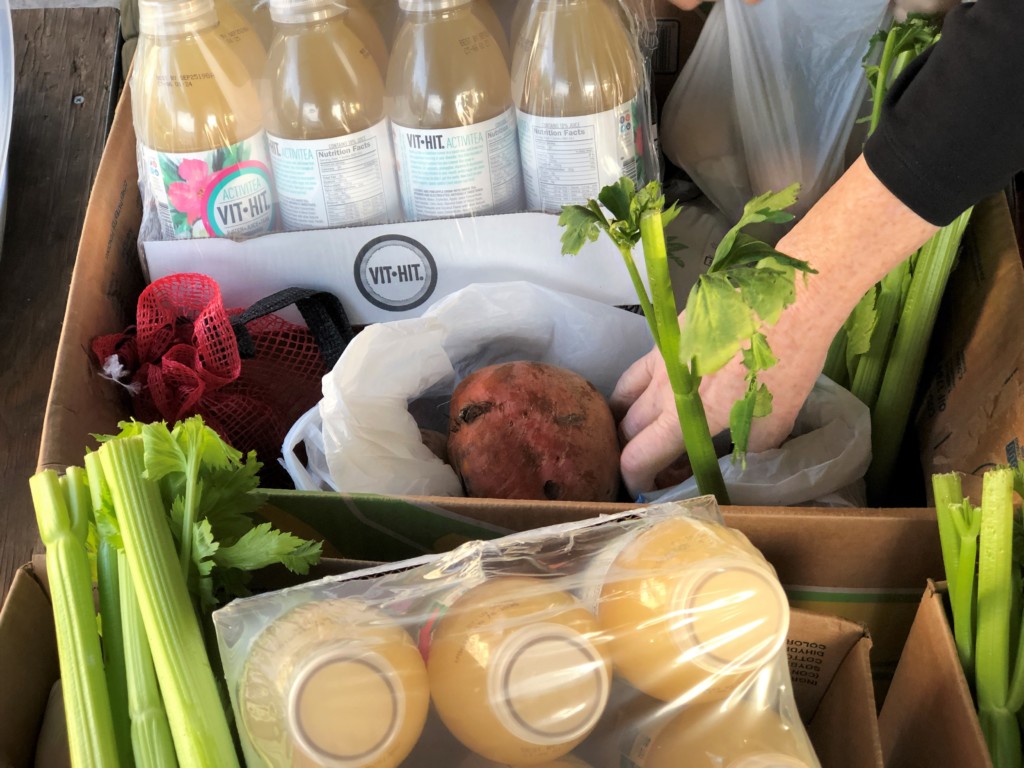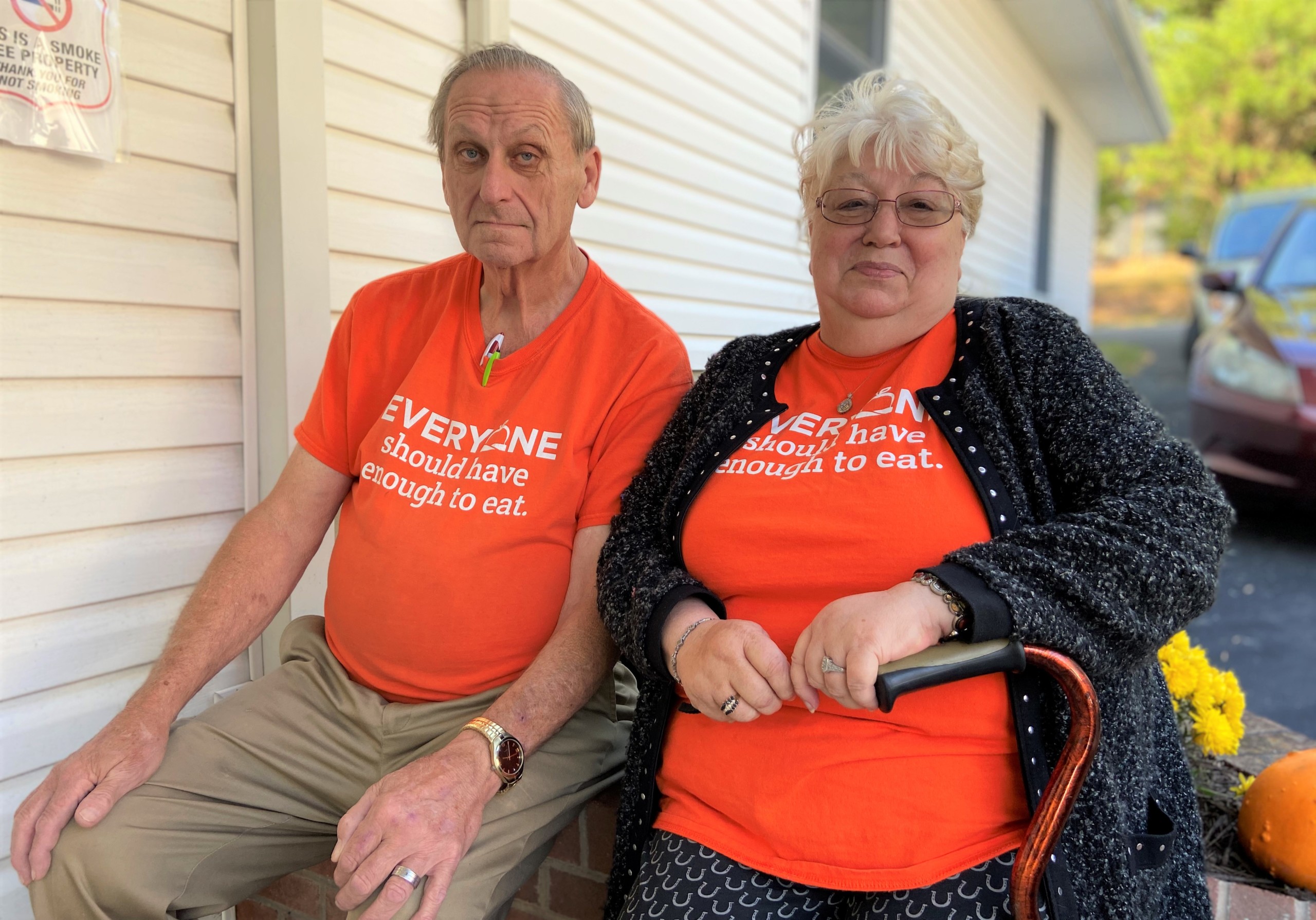
Seventy-year-old Naomi McCray transports her Bath County Fair ribbons to Ashwood United Methodist Church’s food pantry in a plastic box with a secure lid. Her collection, accrued through the years, is organized into neat piles: A stack of blue ribbons represents first-place honors for her homemade sauerkraut and pickled beets, and a massive purple ribbon — labeled “Best In Show” — she credits to her famous fig preserves.
Both a Food Bank client and dedicated volunteer, Naomi never misses a distribution. Not only does she pick up the fresh ingredients she needs to eat well (and fill her pickling jars with leftover produce), but she passes out positivity from where she perches in Fellowship Hall, donning her orange Food Bank shirt, greeting neighbors, and helping them select personal-care items.
“I need my kisses!” one woman exclaims, her arms outstretched toward Naomi. Yet another visitor sneaks up behind Naomi, resulting in friendly banter and hiccup-y laughter. Naomi’s eyes crinkle under pink-rimmed glasses when she smiles.
Gathering for food and community
“This is a way for folks to experience community,” says Robin Swecker, partner services coordinator at the Blue Ridge Area Food Bank. “Folks arrive at the pantry early because it gives them time to catch up.”
In a county of 4,000 residents, everyone knows everyone. Two elementary schools and one grocery store dot the 535-square-mile expanse. Despite its rural nature, Bath is a food desert, and fresh produce is tough to come by. Seniors outnumber young folks, and those who can hold jobs often do so seasonally. Need is a shared understanding, and hunger is, more or less, accepted. Many people — especially seniors — rely on multiple pantry distributions to get by month by month.
A Frost, West Virginia native raised on a farm, Naomi was accustomed to “growing what [she] ate.” Now unable to garden due to disability, she has turned to canning, transforming surplus into treasured jars for future meals. She cites the influx of fresh produce at pantry distributions as an exciting addition.

A busy day helping others
All afternoon, Naomi’s husband James buzzes around the parking lot with a clipboard, checking in recipients for the Senior Food Box Program (CSFP) and loading the government-issued food boxes into backseats and truck beds. Meanwhile, many other volunteers help clients pack up everything from pinto beans to peaches. In total, 180 people are served that day at Ashwood — not including the 18 whose Senior Food Boxes will be delivered by Naomi and James after the five-hour distribution concludes. (St. Luke’s Episcopal Church, a partner agency down the road in Hot Springs, facilitates this process.)
A former Augusta County correctional officer, James is organized, polite, and permanently postured at attention. That morning, Naomi notes, “He got up and did laundry and vacuumed the house before we left.” When the 68-year-old married Naomi in 2012, she says, “he married into volunteering” alongside her.
By the time the pair finally peels out from the church parking lot at 6 p.m. to deliver to their home-bound neighbors, they have their own distribution stowed and James is behind the wheel. Naomi reigns in the passenger seat. “He’s my legs,” she says. “I direct!”
Why Naomi gives
Most days, Naomi displays her ribbons proudly on the walls of her home. Nearby, home-canned goods sit stacked beneath the bed, fill the closet, and occupy the inside of a giant chest. This stored supply means there will be more preserves to present at the fair, more green beans to spoon onto plates at Windy Cove funerals, and more sauerkraut to share with neighbors.
“I just like giving to people!” Naomi says. “It makes me feel good.” She’s kept herself so busy volunteering since she stopped working that she can’t remember when she retired. The Food Bank supported her in a time of need, so she sees her service as a natural progression. “They say, ‘Pay it forward.’ Well, I’m giving back!”
The Scope of Senior Hunger
The McCray family is one of the senior households we serve. The numbers below reveal more about senior hunger:
- $98: the average monthly SNAP (Supplemental Nutrition Assistance Program) benefit for eligible senior households
- 53%: how much more likely a hungry senior is to have a heart attack than a peer with access to healthy, sufficient food
- 6%: Virginia households with seniors facing food insecurity
- 17%: Blue Ridge Area Food Bank clients who are seniors (age 60+)
- 2,853: the number of people served monthly through Food Bank senior nutrition programs (Senior Food Boxes and Reach)
(Sources: Food Research & Action Center, 2014–2016; Feeding America, 2019)

Visit www.brafb.org/reach to learn more about Food Bank programs that help low-income seniors.

